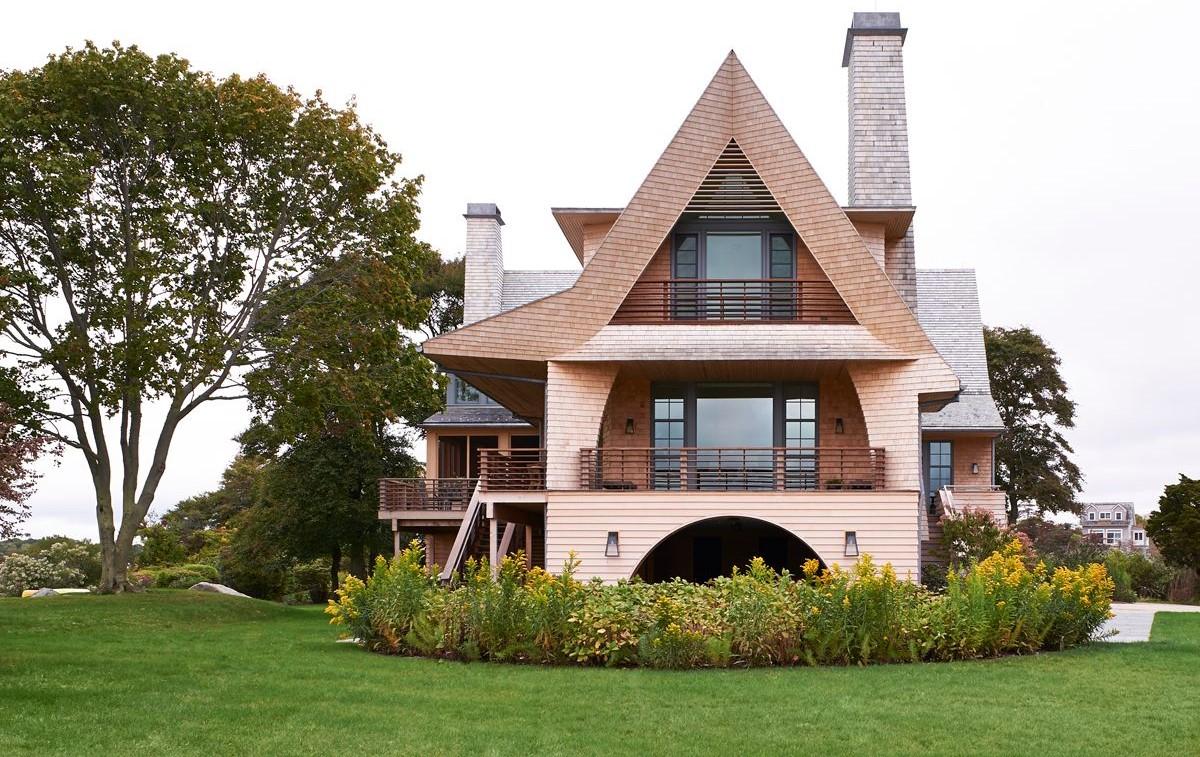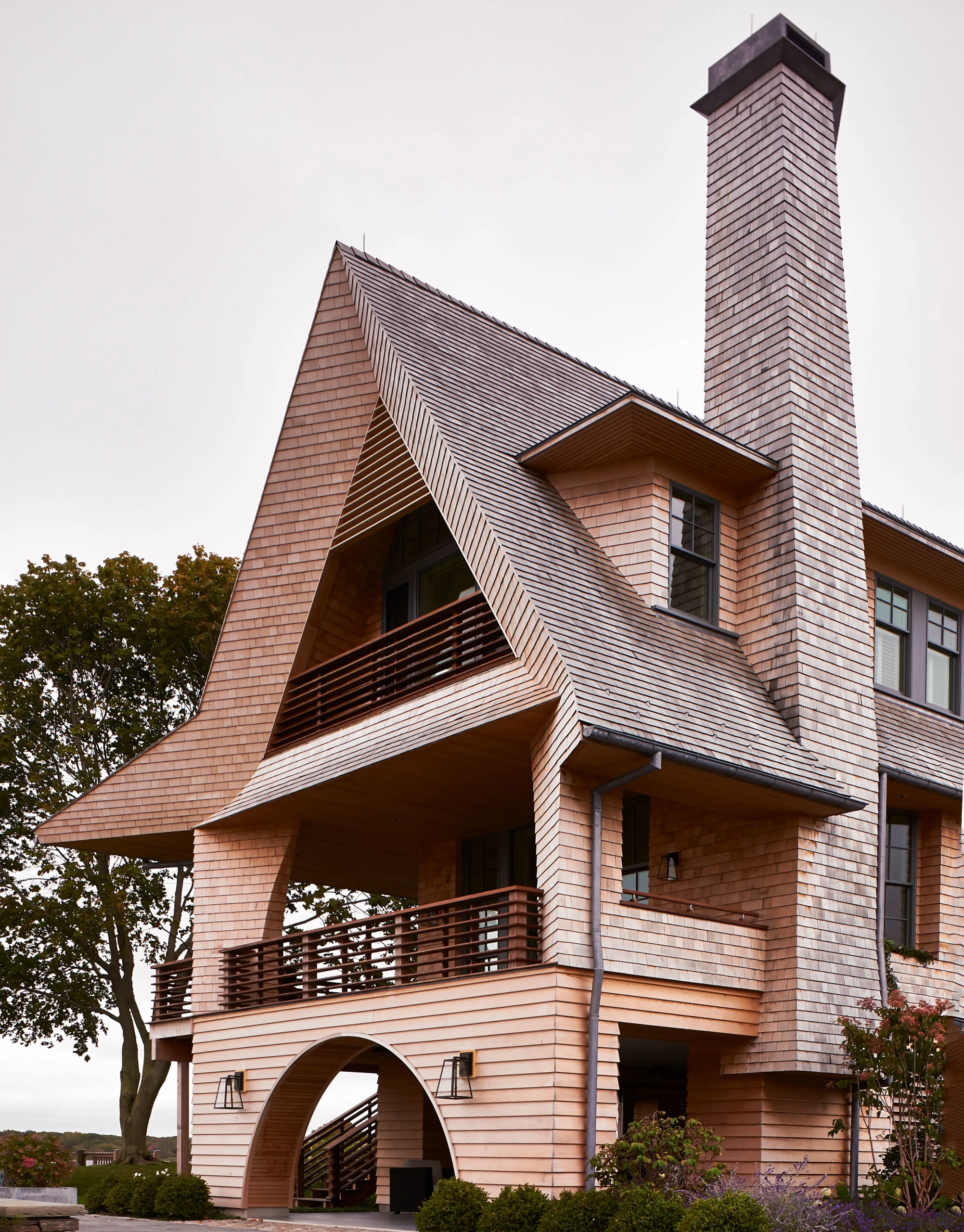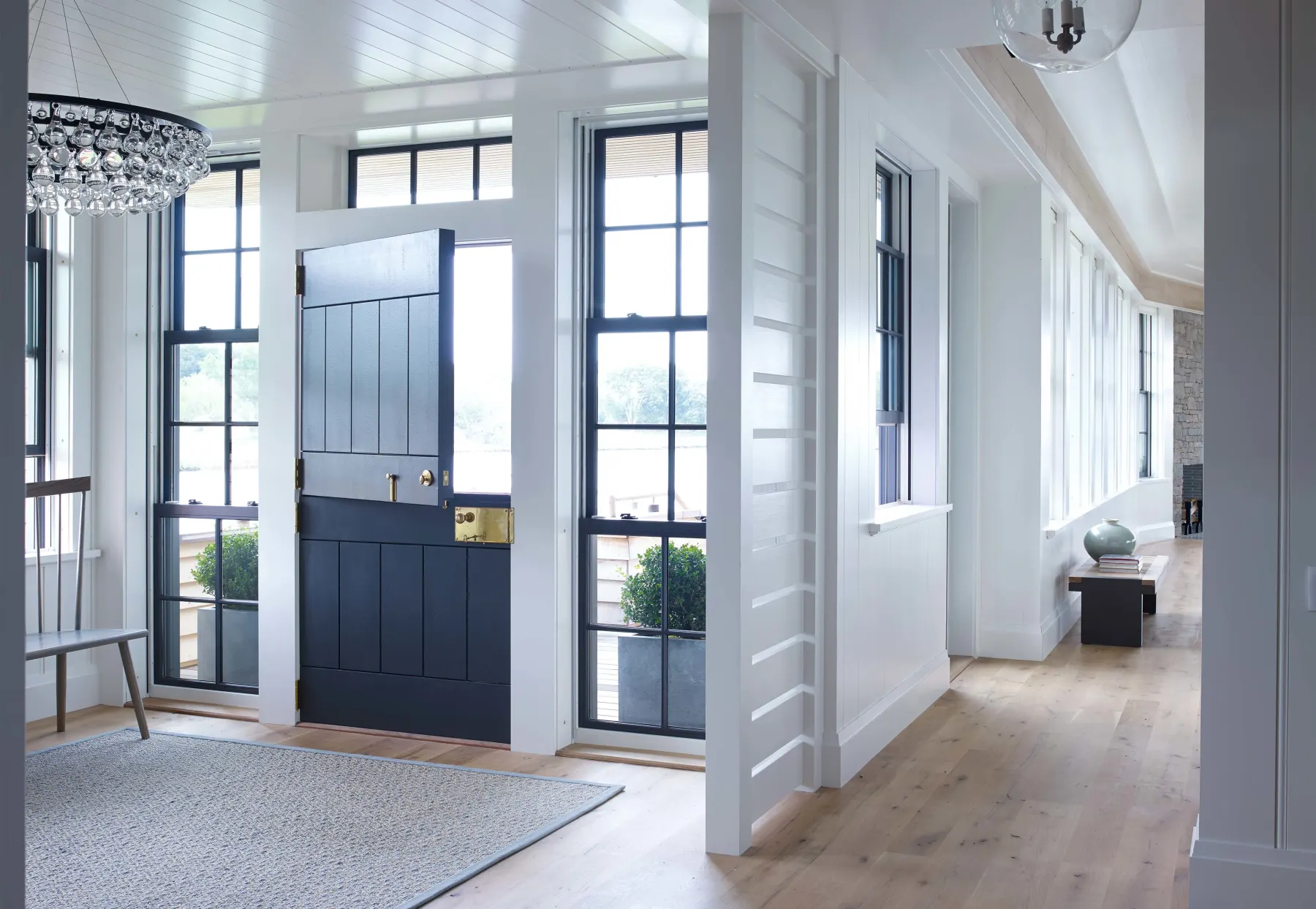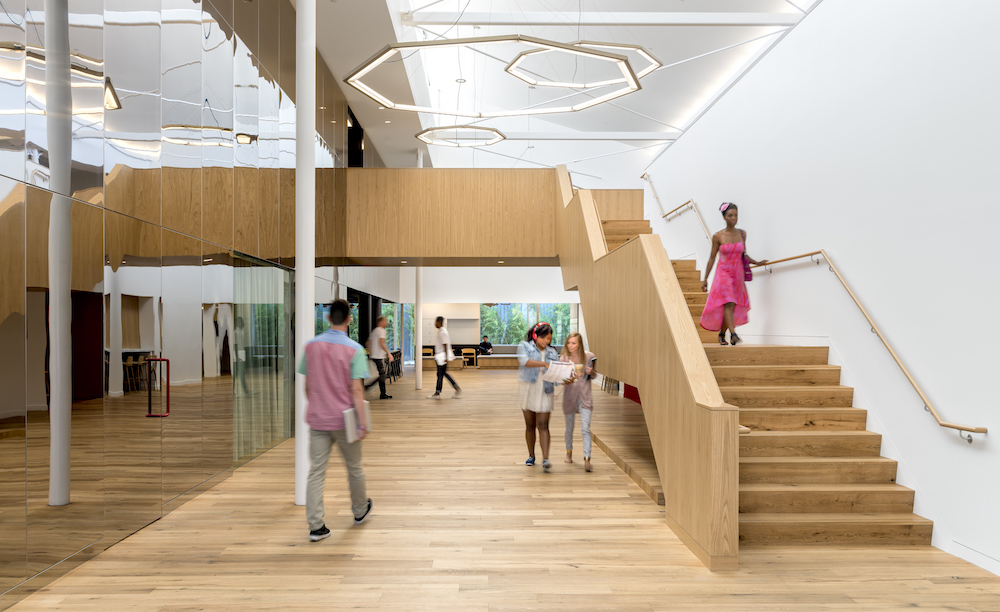FRANK, Denison Yachting’s magazine for its upscale clientele, recently commisssioned me to write a piece on a Shingle Style home designed by noted architect Tom Kligerman. It’s on the water in Watch Hill, Rhode Island, and it has an interesting history of how client and architect came to collaborate on a project that’s both traditional and modern. A+A is pleased to post it today:
When architect Tom Kligerman hopped into a cab on his way to the Providence, R. I. airport on a summer morning in 2005, he was greeted with a surprise announcement.
His cabby said there was a shortage of drivers, so they’d be stopping to pick up another passenger in Watch Hill. Once they’d made that stop, the two riders chatted for an hour, then parted ways.
Fast-forward seven years. Kligerman opened up an email and found a second surprise announcement. It was his former fellow taxi mate. He and his wife had bought a property on a cove in Watch Hill, and wanted him to design a house there. Kligerman competed for the job – and won.
“The thing we were drawn to was that he understood the aesthetic of the area and how the house would look from the water – because he was a sailor,” says the wife, a novelist whose husband is in finance. “He had a world-class firm in New York and could do all the due diligence and drawings, but he had local knowledge.”
The couple was just back from Switzerland, where they’d taken a deep dive into the clean lines, flat roofs and open floorplans of modern architecture. And that’s what they wanted for their new lot surrounded by water on three sides – a site that was highly visible all around.
Kligerman was concerned that the neighbors might not appreciate something quite so contemporary. “I said: ‘Let’s make it a modern interpretation of a traditional house,’” he says. “So it’s a Shingle-Style house with one foot in the modern idiom, and one in a more traditional idiom.”
At 7,000 square feet, this is no small affair. Inside, it’s open, light, casual and refined, but it’s packed with six bedrooms too. The couple have three children who were young when it was finished in 2014, but are in their twenties now. “We wanted enough bedrooms so our kids could come with their own kids and partners and families eventually,” the client says.
Sited on an acre and a half, the home came with restrictions on how and where it could be built. Anything within 1,000 feet of the water falls under the purview of the Coastal Resources Management Council. “They designated a strange footprint that looked like a little Pac-Man,” Kligerman says. “And it had to be raised 12 feet up off the ground.”
The town ruled that the home couldn’t be taller than 35 feet, so there were height limitations too. But this is an architect who views restrictions as positives, since they encourage inventiveness. And he looked at his challenges with an artist’s eye. “It was like a sculpture – it became what was left after we’d chipped away at the box we’d been given,” he says.
Here his background as a sailor was truly an asset. He looked at the house as a boat on a prow-shaped piece of land – like a steamer heading out to sea, “It faces south at the narrow gable,” he says. “The broad expanses are at the east and west.”
Outside walls are clad in yellow shingles of Alaskan cedar, a material the architect used also on the planks below. The foundation was poured-in-place concrete, and the cedar planks sheathe it. Those planks are echoed inside the house too, with long, horizontal woodwork. Even the railings around the house are simple and clean and horizontal. “It’s Japanese-like,” the client says.
The roof – a big one for a big house – features a slant that’s long and angular. “The overhang has the visual effect of pushing everything down,” she says.
The couple wanted a huge open floor plan on the interior – but with bedrooms that aren’t too expansive. “We wanted to dedicate most of the space to be communal,” she says.
The interior color palette is reminiscent of a ship’s – with white walls, gray decks and a shiny green for some of the rooms. “I saw the color scheme in nautical terms,” Kligerman says.
Actually, he saw the entire house that way, as it looks out over land and cove. The client says she feels like she’s floating above the water on the bow of a ship. “That’s kind of cool – and it’s a byproduct of the limitations we had to deal with,” she says.
It’s also a byproduct of that shared 2005 taxi ride, one that delivered a moral, according to the architect. “Be nice to everybody you meet,” he says.
In Watch Hill, it’s a belief that paid off in spades.
For more, go here.




